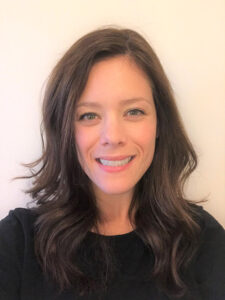Ben Murray—also known as The SaaS CFO—definitely knows a thing or two about the financial metrics and methods that matter most to businesses in the software as a service (SaaS) space.
With more than 20 years of experience in finance and operational management, Murray is using the wisdom he’s gained to help software businesses link their operations and finance for clearer insight and better financial intelligence.
Murray got his start in the software world in the early 2000s working as a financial analyst for a technology company that focused on healthcare.
It was all about on-premise software at the time because, of course, the cloud and the concept of SaaS hadn’t yet been introduced to the business world. The term SaaS was still unknown, and so were the financial metrics we now associate with it.
“Back when I started in software, we weren’t talking about customer acquisition costs, payback periods, lifetime value, and the SaaS magic number,” he says. “It was really more about financial statement analysis.”
With the evolution of technology came a shift from on-premise software to hosting these applications in the cloud, and of course, a move to SaaS and the subscription model. And the focus of finance teams evolved in unison.
“With a SaaS company, it takes more than just looking at the financial statements,” he says. “If you really want to understand the economics of your business, you have to look at the SaaS metrics that are relevant to the stage you’re in. This will really help you understand the health of the business and where it’s going.”
While Murray hadn’t been taught these metrics in school—as they weren’t yet part of the curriculum—he picked up information with continued experience and exposure to the SaaS finance world. He enjoyed the learning process, and even more so, he liked seeing how the metrics could be applied to the businesses he was working for.
Murray earned his CPA license along the way and eventually worked his way up to CFO status.
Fast forward to the present, and he’s now the one teaching these metrics. Through his SaaS Academy, he offers both free and paid courses for those who want to learn more about SaaS metrics and forecasting their finances.
“A lot of founders and SaaS teams need to be pointed in the right direction, which is what I try to do with the content I put on my blog and academy,” he says.
We recently connected with Murray to get his take on the evolution of financial technology and infrastructure in SaaS businesses, and what’s going to differentiate those that struggle from those that thrive in the next year and beyond.

The rise of data, and how recurring revenue businesses are putting it to use—or aren’t
There’s so much data available to SaaS businesses today. But the question is, are they using this data effectively to guide their growth strategies?
“I think there’s still a long way to go and it depends on the maturity and the size of the SaaS company,” says Murray.
For scaling SaaS companies still within a couple of million dollars in annual recurring revenue (ARR), there sometimes aren’t the resources in-house to sift through and make use of all the financial and accounting data available, he says. Others simply haven’t learned which metrics would be applicable to their business, depending on their stage and size.
“They’re initially worried about their cash flow and just surviving and growing,” says Murray.
Additionally, there are core systems businesses must have in place for proper financial transparency and to effectively leverage data.
As SaaS businesses scale, there are a lot of opportunities to mature their financial and accounting processes. But sometimes they just don’t know where to begin.
The successful SaaS fintech stack
There’s a progression successful SaaS companies often go through as they begin to scale, starting with putting the right systems and technology in place. As a first step, Murray says he sees a lot of them move to new accounting systems from ones they’ve outgrown. This is important because having accurate, reliable financial statements is crucial.
“You have to start with the accounting basics,” he says. “It sounds so boring, but you need a good general ledger accounting system. It’s essential for SaaS businesses to apply the correct accounting principles to their invoices and the revenue that hits their P&L. And from there they can increase the complexity of their finance and accounting function.”
Once a business has a good accounting system in place, the invoicing and revenue recognition side should be their next focus, he says. Customers need to receive correct invoices every time, and proper revenue recognition is a must for subscription businesses.
Next, gaining access to a comprehensive dashboard is helpful for understanding a business’s recurring revenue streams at a glance. And if your dashboard pulls data directly from your payment gateway, you can monitor your revenue in real time.
Subscription billing software can also be an important inclusion or add-on to a SaaS business’s fintech stack.
“Depending on your business and pricing model, invoicing can become so complex that you have to have the flexibility to invoice customers in a certain way,” says Murray.
Some of the accounting systems out there can’t do everything SaaS businesses require in terms of recurring billing operations. Subscription billing software can be the solution, and it can integrate seamlessly with a business’s entire technology stack.
With the right software and financial systems in place, SaaS billing businesses can start to pull out the metrics they need to understand the health of their recurring revenue streams and the underlying health of their businesses. This will help ensure they’re moving in the right direction.
“There’s kind of a maturity path that you follow as you scale to really be able to optimize your understanding of your business,” says Murray.
How quickly are companies adopting automation technologies for recurring revenue accounting?
Once SaaS businesses have the right technology and infrastructure in place to organize their financial data into metrics that matter, they can benefit from automation capabilities.
These capabilities—from automated renewals and invoicing to dunning management and revenue recognition—save them time and effort, in addition to reducing risks associated with error-prone manual processes. And accuracy is crucial because it enables businesses to build trust with their customers.
“If you can get that efficiency in place instead of just trying to keep up with your monthly close, invoicing, and everything else that runs the financial operations of your business, then you can spend more time on really understanding where your business is going,” says Murray.
Automation has become the new standard in today’s SaaS world. It’s about making routine what should be routine, and helping businesses reclaim more time to focus their energy on their operations. For example, the health of their recurring revenue streams and their retention and churn trends.
The best are embracing technology where it’s appropriate within their businesses and leveraging the efficiencies that software provides,” says Murray.
So why are so many SaaS businesses still lagging when it comes to automation technology, even though the benefits are clear?
“Sometimes they have to reach that pain point where they realize their current setup isn’t working.” He says. “Either that or an outside expert who’s helping them and has experience in those areas says, ‘Hey, you guys should be really looking at this process or this technology to improve your financial and accounting operations.’”
A lot of the time, growing SaaS businesses also come under scrutiny while they’re seeking capital. During their due diligence process, it can come up that they need to improve their financial operations in order to be able to provide the required data.
Taking the first step toward a successful SaaS finance strategy
Time and again, Murray sees SaaS founders and their teams reach that critical pain point where they know they need to make a change. Maybe their accounting system or their invoicing process is creating a barrier to scale, or they’ve done nothing in terms of managing their revenue recognition.
Up until that point, they’ve been so focused on building their product and satisfying their customers that these issues were an afterthought.
But then there’s some triggering or event, whether it’s seeking capital, or they finally realize they don’t have the operational and financial transparency to run the business.”
Ideally, SaaS businesses would recognize where they’re going and see the need for change before the pain point occurs, but usually, that’s not the case, says Murray.
The best in SaaS are always looking ahead
The most successful SaaS businesses are moving away from historical analysis to a more proactive, forecast-based approach. Businesses need to know where their revenue, expenses, and cashflow are going over time.
“It’s a shift from reading your financial statements each month, and that’s all you’re doing as far as your financial process, to looking forward to understanding where your business is headed,” says Murray.
Scaling SaaS businesses also need to look forward and assess their future requirements. Over the next five years, what needs to be in place in terms of revenue, staff, processes, and technology to support a business of a certain size and scale, he asks. What resources does your business need, and how does your strategy translate into your finances?
This level of forecasting and business planning is how leading SaaS businesses are growing to all new levels of success.
“I think it’s really important to be looking at your business this way because once you get to a certain point and you realize your current process is broken, it’s going to be even more difficult to dig yourself out of that hole.”








